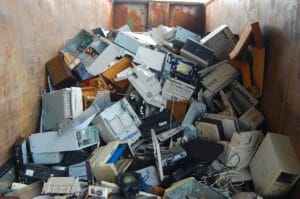In an economy where every dollar counts, mortgage payments are not the only major bills on the minds of homeowners. Utility expenses also take a painful bite out of the household budget. For now, the solution to cutting energy cost is right inside the home.
The Energy Star program, created in 1992 by the Environmental Protection Agency (EPA) and the U.S. Department of Energy, suggests some tips that should be adopted by the homeowner looking to cut excessive energy usage. In addition to these tips, homeowners can also make use of some common sense upgrades that have proven to work well.
Change your air filter
The Energy Star program recommends changing your air filter regularly — at least once every three months. Air filters block dust, mold and other airborne particles from entering the home through the duct. When the air filters are clogged and filthy, your HVAC system will be forced to work a lot harder than it’s suppose to, which would then increase your energy cost.
While you are at it, you might want to tune up parts of your HVAC system to enhance performance. Doing this once or twice a year is good enough. An expert should be called to help unless you know everything about your system. To ensure your system is up to par, look for and fix loose electrical connections, apply lubricants to squeaky moving parts, and remove trapped dirt in the blower compartment. Fine-tuning your HVAC system makes a significant difference, but that’s not all.
Properly seal your ducts
The Energy Star program also recommends seeing to it that your ducts are always properly sealed. Ducts act as tunnels through which the warm or cold air travels to reach your rooms. They are known to be energy wasters when in bad shape. You can improve energy efficiency by as much as 20 percent if you fix your defective ducts. One simple way to test them is to find out if there are rooms in your home with vents in them that just don’t get warm or cold enough compared to other rooms. If that’s your situation, it’s likely you have defective ducts that need repair.
Replace incandescent light bulbs
You can top up Energy Star’s recommendations by simply adding some common sense energy-saver tips that have also proven to be very effective. One of them is simply replacing incandescent light bulbs in your home with energy-saver bulbs. This effort not only saves you money, but it also helps the environment. The Union of Concerned Scientists, a not-for-profit science organization, reported that if every U.S. household replaced just one incandescent light bulb with an energy saver bulb, it would help prevent 90 billions pounds of harmful gas emissions from power plants (coal and the like).
Energy-saver bulbs are often priced slightly higher than regular bulbs in stores, but the difference can quickly be recouped within one- to two-months’ use. If you happen to go shopping for a couple of them, look out for bulbs with the Energy Star logo.
Upgrade old home appliances
Upgrading your old home appliances to newer versions can also seriously help cut costs. If you’ve been to retail stores that carry appliances, you may have noticed most of them are decorated with energy-saving stickers. The most popular one is that of Energy Star. Some appliances like the wall-mountable AC’s are also equipped with programmable features that can be set to conserve energy while in use. The prices of appliances continue to fall most likely due to competition from various brands. This might be the right time to start replacing your old, energy-guzzling home appliances.
Insulate your walls
Lastly, unless you have already done so, insulating the walls of your home is one smart way of reducing energy cost. For those who are building new homes from the scratch, it’s highly recommended that you add wall insulation from the outset. One other factor that forces your HVAC system to work a bit harder is when hot or cold air leaks in and out of your walls. Besides, if you are thinking of placing your home on the market, full-home insulation is one of several positives for pitching your home value. Maybe your current budget is not good enough for a full home insulation. You can still do a little bit by looking for areas in the house that are not usually covered with dry wall, such as the attic, basement and garage. By simply applying spray foam or rolled fiberglass to relevant areas, you will notice some difference in heating behavior at home. If you are not the handy type in remodeling, utilize the services of an expert.
Try implementing these energy saving tips mentioned, then sit back and watch your energy bill go down. Moreover, you would also be contributing to the reduction of harmful gas emissions into the atmosphere.



